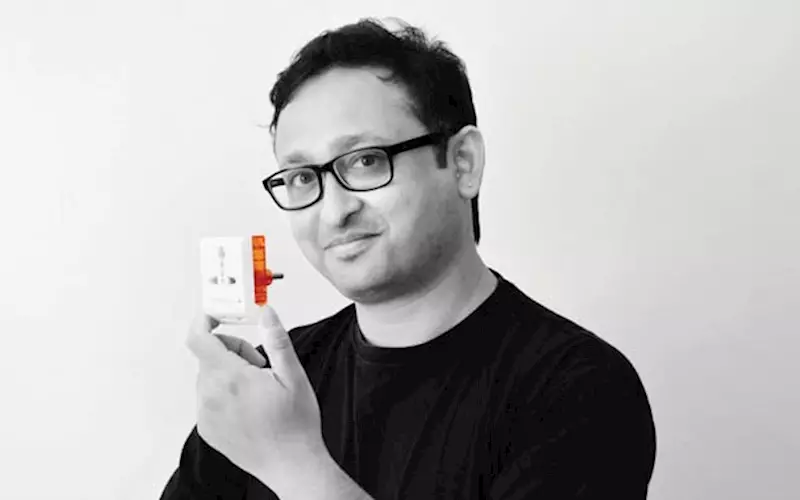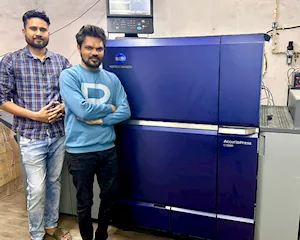Paul Sandip is an award-winning product designer, who has designed over 300 iconic everyday objects in 121 product categories for clients from 14 countries. He is the two-time winner of the Red Dot Award, among other international accolades. In 2004, he created the spherical bulb holder and angular multi-plug for GM Modular
Designing different things
I just design. I don’t look at other aspects like how to sell and market the product. To enrich my experience and to increase my knowledge base, I would rather design objects in different categories than working on one particular field. For me, it’s a creative process. For me, the process of designing writing instrument is the same as designing home appliances.
Talking about specialisation, companies hire me because I am a generalist, not a specialist. As you go deeper into processes, it is difficult to find fresh perspective. It becomes restrictive. I perform the best when I get a project I haven’t done before, where I am allowed to ask silly questions. When we design objects, we tend to forget the basics of it; we get into processes and limitations.
Therefore, I prefer to get into a design aspect with an open mind and ask lots of silly questions.
Being an industrial sculptor
Being an industrial sculptor is one facet of being an industrial designer; it refers to the artistic bent. When we design, we try to understand the needs and try to fulfil these and build on these. Industrial sculpture refers to the form. For me, being an industrial sculpture is to remove the superficial aspects and get into the core of it. That’s how I see myself as a sculptor. Like a sculptor who chisels a statue out of stone, I try to bring out the inner beauty of a product.
The Paul Sandip style
I am a designer of everyday objects. I am emphasising on everyday objects because these are the objects that go unnoticed, and their basic function is to make your life easy. My style of design is to offer a solution which should make people exclaim, ‘Wow, why didn’t I think of it?’
I am not making aesthetic statements through my design. So, there is no common aesthetic identity in my design, but a common ‘wow’ factor.
For example, some years back, I was approached by LG to design a television set for the Indian market. But TV sets are the same. How do you make it India. The obvious route is to make some cosmetic changes and add some colour and graphics which are typically India. But I decided that the utility of the product should be Indian, not the aesthetics. Utility is what defines a culture. We did a pan-India survey and we understood the usage.
With LCD TVs, now everyone hangs the TV set on the wall. It’s well and good, but what happens to the DTH box, DVD player and other paraphernalia? For this, each household makes its own ‘jugaad’. Now, the TV comes with a stand, which remains untilised. This is a cost added to the price of the TV.
So I decided to get rid of the stand and instead designed a shelf under the TV set for the ancillary objects. The cost remained the same and the design achieved utility. This is how I approach designing products.
Designer objects
The general perception is that design increases cost; designer products are expensive. My approach is to kill this elitism in design. I want to make well-designed everyday objects. I believe everybody has the right to good design.You can do it when you make the designer anonymous and the product the hero.
The point is, if you make a great product, you don’t have to go around selling it. Instead of pushing it to customer, with a great design, you can pull the customer.
Designing the spherical bulb holder
My job was to identify mundane objects and add some uniqueness to them. I started with the bulb holder. The design has remained the same for more than 100 years, where the mechanism of the holder is visible from the outside. The idea was simple: Hide the engineering and make it look beautiful.
The major challenge was cost. My idea of adding a shell around it to hide the holes was expensive. But I told the directors at GM Modular that though it’s expensive, the design will increase the value of the product manifold, so much so that the company will be able to create a different category for it. Thankfully, they listened.
The product was launched in 2004. Today, it has almost replaced the regular bulb holder. Interestingly, despite cost, most electricians prefer the spherical bulb holder, because the end result looks good and they receive praise from their customers.
Things have changed dramatically in the last couple of years. Today, the electronics trade is completely design-driven; it’s a phenomenal change. In designing a product, the major challenge is the approval of funds, everything else gets shorted out.
Where there is a will, there is a way. But if the newly designed product is expensive than the existing one, it’s difficult to convince the manufacturers.
Identifying design opportunities
I was a professional cartoonist. As you know, the observation skill of a cartoonist is more critical, more subtle. He notices details that others may miss and focuses on these details.
I still observe. I still notice little details in my everyday life, from door handles to multi-plugs and try to come up with better designs.
I always say, don’t just see, look. That’s the key to innovation.
These interviews appeared on Audiogyan, an Indian podcast hosted by Kedar Nimkar. So far, the podcast has 64 posts and more than 65,000 listens. You can listen to the full version of the podcast at audiogyan.com 













 See All
See All